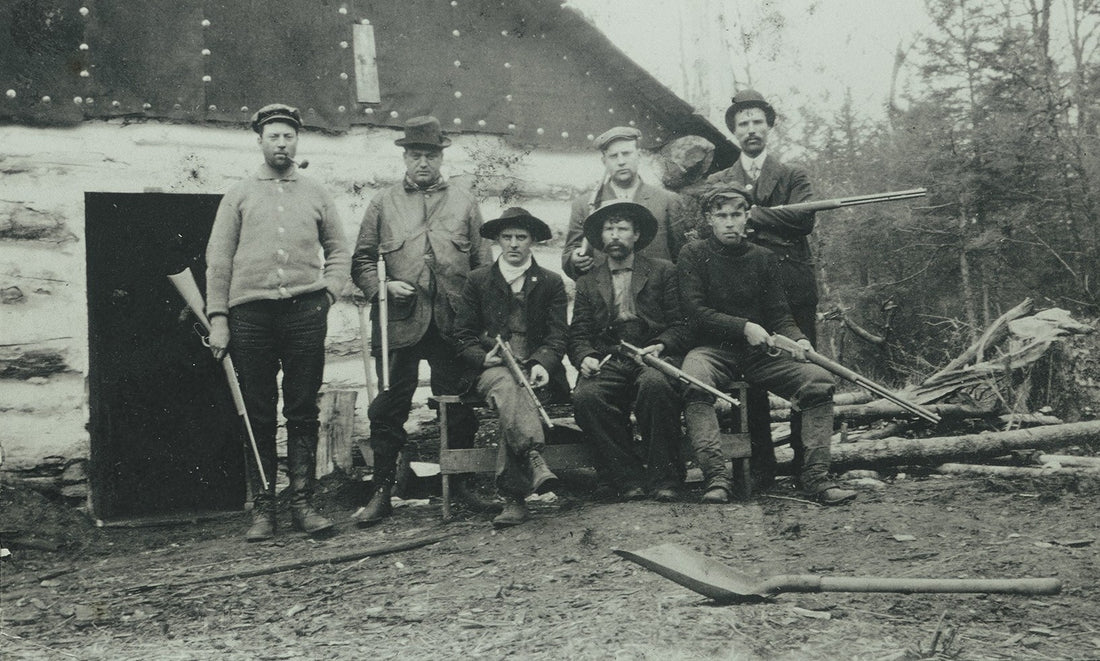
A Brief History of Logging Services
Share
Logging services and forest management have been around for a long time. Although they may not be what we’re familiar with now, practices in agriculture cultivation are some of the oldest talents that humanity has developed. Much of the landscape that surrounds us now is thanks to centuries of forest management.
1. The Beginnings of the Lumber IndustryCutting down trees for manufacturing and fuel began long before the founding of the United States. By the thirteenth century, from 1200-1300, certain wood supplies in Britain had already been used up by increasing industrialization.
The earliest logging work took place alongside rivers, where there was both a lot of timber and a free-flowing means of transportation. At that time, forests looked inexhaustible to early loggers. They are typically uneducated, low-skilled migrant workers forming lumberjacks - an enormous amount of labor. During the logging season, the lumberjacks made their home in a rustic bunkhouse that often housed more than 70 at a time. The men slept two to a bunk on prickly mattresses of hay. They sometimes lined their bunks with cedar boughs in an effort to ward off bedbugs and "greybacks," the bothersome body lice that followed the jacks from camp to camp.
Each night they hung pants, underwear, and socks overhead to dry. There was a single long bench in front of the bunks, called the Deacon seat; this was the center of the lumberjacks' social life, where they spent their evening playing cards, talking, and smoking.

2. The white pine boom
Logging moved inland and temporary logging camps were erected each winter in a new location close to a fresh stand of pines. Logging was done in the winter, and the logs were dumped onto riverbanks to wait for spring. With the spring thaw, the lumberjacks drove the logs to sawmills. The most economical way to move logs to the sawmills was to float them downriver in early spring, when the water levels were high from melting snow. The wanigan, a barge-like boat, was the headquarters for the drive, serving as a floating cook shack and bunkhouse for the river drivers. These methods of transport were prevalent up until the 1890s, when railroads began to penetrate far into the woods.

3. The sawmills
In the 1800s, wherever there was timber there was also sawmilling. Sawmills were built next to rivers, which were both the “highways” that floated timber from the woods, and also the main source of power to run the mills. However, harvesting dropped rapidly after 1905. By the 1920s, the prime pine stands were exhausted and there wasn’t enough lumber-quality timber in the woods to justify the expense of maintaining railroads. The large-scale sawmilling industry virtually vanished by 1929.

4. The end of the camps
Road building accelerated in the 1930s contributed to ending the camp system, allowing loggers to get into remote areas, haul their loads out on trucks, and still get home in time for supper.

5. Modern logging
In the mid-1960s, machines like feller-bunchers, skidders, and crane loaders were put to work harvesting the new forests of young aspen, spruce, and birch. These machines are still widely used primarily for clear-cutting, which is preferred for some types of harvest.
The typical 21st-century logger lives in the area year-round with his or her family, and is either self-employed or works for a small, perhaps family-owned, logging outfit. Loggers today maneuver not just through forests but also through dense thickets of environmental guidelines. With one eye on timber trends from around the world, today’s logger is a highly trained and skilled worker who combines the talents of a business person, an ecologist, a land manager, and a tech-savvy machine operator.
Everything changes, but there is one thing keeps unchanged:
Logger’s clothing
A logger performs a very physically demanding job. You often work outdoors in all weather conditions to cut, skid, and load timber for transportation. The job requires durable clothing that allows for free range of motion. Most loggers wear durable jeans or work pants as well as a durable shirt. Many companies make clothing specifically for logging and other outdoor professions. You also wear durable, comfortable caulk boots. These typically have steel toes for safety and spiked soles for increased traction. You also wear hard hats (or similar helmets), ear and eye protection, gloves, and other safety equipment.
Check our Logger Hoodie right here to choose the best gift for your beloved logger. These items on site are specially designed for this Xmas and birthday occasions.